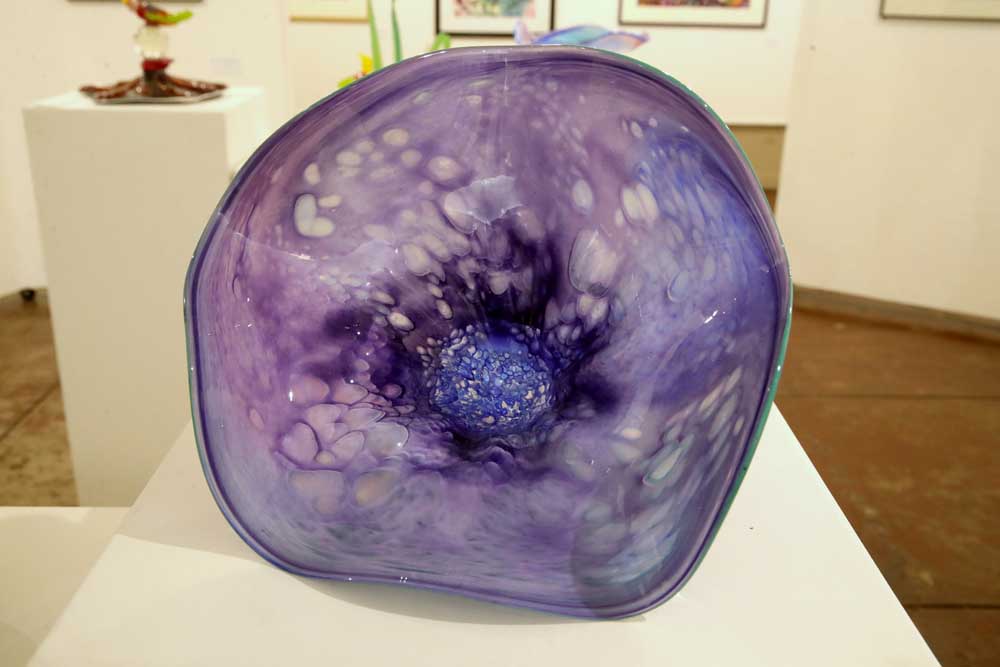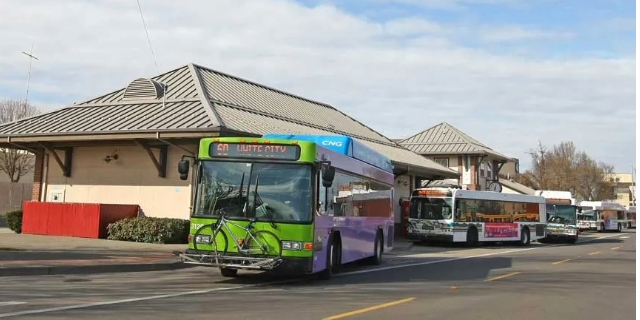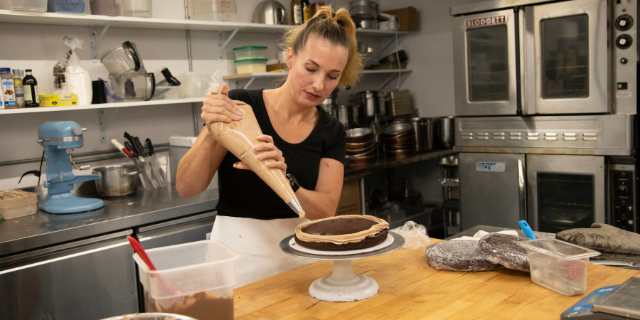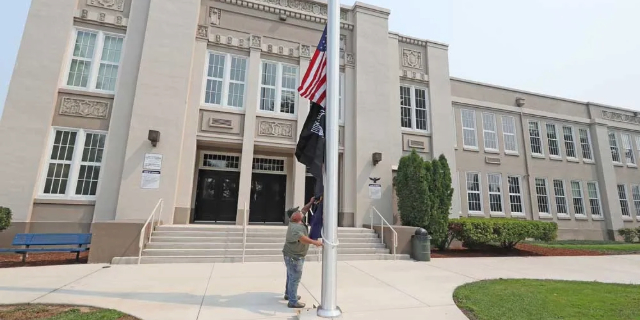New Rogue Gallery exhibit explores fire and water through glass, watercolor
Published 11:00 am Wednesday, May 22, 2024

- Glass sculpture from of Peter Patterson of Chicago inside the Rogue Gallery and Art Center in downtown Medford.
The bold, abstract watercolors of Lynda Hoffman-Snodgrass and the fluid, luminescent glass art of Peter Patterson have coalesced through the shared exploration of the two natural elements, fire and water.
Titled “Steam Works in Watercolor & Glass,” the two artists’ shared exhibit at Rogue Gallery and Art Center opened May 10 in Medford.
“Peter (Patterson) is the fire and I’m the water, and so we thought ‘steam’,” Hoffman-Snodgrass said.
Filled with vibrant colors, bold brush strokes and masterful use of abstraction, Hoffman-Snodgrass’ paintings symbolize the free-flowing nature of water, developed through life experiences, dreams and visions.
“The Rogue Gallery is really excited to have Lynda’s work here; her abstracts are beautiful and they have a vibrantness to them that a lot of watercolors don’t,” said Kristen O’Neill, executive director of the RGAC. “(Hoffman-Snodgrass) gets a lot of impact in with color and boldness that you usually see with acrylic or oil, and the fact that she can make the medium do this has always amazed me.”
Utilizing multiple glass-blowing techniques and processes, much of Patterson’s art reflects his life experiences and underwater adventures as a scuba diver.
The artist fashions multiple items and shapes from bowls to chandeliers, with many of the pieces demonstrating a unique luminescence within after shining a blacklight on them.
The exhibit will run through June 28 and the gallery is open from 10 a.m. to 5 p.m. Tuesdays through Fridays and 11 a.m. to 3 p.m. on Saturdays.
The gallery is located at 40 S. Bartlett St. in Medford.
With a shared love for vibrance inspired by the elements, many of Hoffman-Snodgrass’ artworks begin with a color palette and are developed through a time-consuming process of applying paint, waiting for it to dry and finding ways to develop the painting after concentrated observation.
“It could take up to three days and it changes and morphs,” Hoffman-Snodgrass said of the drying process to her watercolors.
On her eye for color, “I usually pick out a color palette and that is an energy in itself; it sends a message, color talks to people,” Hoffman-Snodgrass added.
Beyond their shared inspiration from the natural elements, Hoffman-Snodgrass and Patterson share ancestry as cousins.
Hoffman-Snodgrass comes from a family of creatives, with her grandfather and mother each earning acclaim as talented artists in their own right.
“My mother was a well-known watercolorist and I grew up with art and painting,” Hoffman-Snodgrass said.
While the watercolor painter learned the painting craft and more from her mother, Hoffman-Snodgrass had challenges with the artistic expectations of the Portland community expecting her to follow in her mother’s footsteps as a realism painter with oils and acrylics.
“Everyone expected me to follow her footsteps when I loved watercolor … It took a while to break away from the expectations because up in Portland everybody was watching me to see if I’d be the protégé of my mother,” Hoffman-Snodgrass said.
Over time the artist continued to develop her style and form, eventually finding her happy place in the watercolor and abstract world.
“It took seven years to do an abstract that I felt was good enough to put out there for people to see,” Hoffman-Snodgrass said.
As a signature member of the International Society of Experimental Artists, the creative is always testing new techniques and bringing new ideas to her art. The artist purchased a massive, 3-foot paintbrush in 2020 and many of her artworks in the exhibit contain brushstrokes from the large brush.
“Who knew how a tool can change a world of painting, I mean, I am amazed,” Hoffman-Snodgrass said.
Beyond her role as executive director of the art gallery, O’Neill has an exhibit of her own inspired by the natural world, albeit through the angle of painting wildfires, the results of the wild flames and looking into the beauty and devastation and culture attached to the natural disaster and those who experience it.
“This was a series that was birthed out of all the 2020 wildfire experiences that as a community we all experienced in very quick succession,” O’Neill said.
The artist and executive director’s series covers multiple wildfires on the West Coast such as the Almeda and South Obenchain fires, Santa Cruz Fires and Salmon Fire in Northern California.
“I wanted to incorporate the fire itself into the work, so I taught myself encaustic — which is painting with hot wax — and then I also picked up chunks of charcoal from forest fire locations,” O’Neill said.
Beyond capturing the scale and effects of the blazes, O’Neill’s work involved conversations with Rod Reed of the Karuk Tribe and opening dialogue on the drastic results of wildfires while understanding the ancient relationship between people and the natural disaster.
“We are taught to believe that forest fires are devastating and they can be, especially emotionally if you lose your house or studio or a loved one … to seek beauty in that, I felt, was kind of scary,” O’Neill said.
The series, titled “Common Ground,” will be on display at the Rogue Gallery until June 21, and O’Neill will host an artist talk from 1 to 2 p.m. Saturday, June 1, with herself and Reed.
To learn more about the Rogue Gallery and Art Center and its future events and exhibits, visit roguegallery.org.







